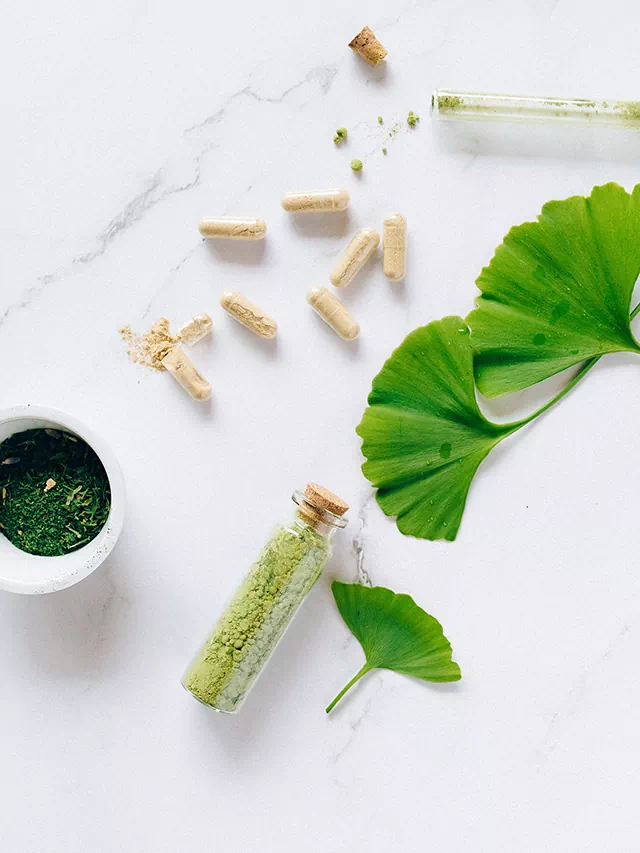Stress and anxiety are a part of life and can impact many aspects of a person’s daily life, including their sexual relationships. When a couple is under stress and anxiety, it can lead to decreased sexual desire, difficulty achieving orgasm, tension and conflict in their relationship, and decreased intimacy. These challenges can have a significant impact on a couple’s well-being and happiness. It’s essential to understand how stress and anxiety affect a couple’s sexual relationship and to take steps to manage and mitigate their impact.
Some points on The Impact of Stress and Anxiety on a Couple’s Sex Life:
1. Decreased libido
Stress and anxiety can have a significant impact on a person’s sexual desire and libido. When a person is under stress, their body diverts energy to deal with the stressor, reducing the energy available for sexual activities. Additionally, stress and anxiety can also lead to decreased hormone levels, which can affect sexual desire and interest.
There are several ways in which stress and anxiety can lead to decreased libido, including:
I. Hormonal imbalances
Stress and anxiety can interfere with the body’s natural hormonal balance, leading to decreased levels of testosterone and other hormones that are important for sexual desire and arousal. This hormonal disruption can result in a reduced interest in sex and decreased sexual desire.
II. Reduced sexual response
Stress and anxiety can also reduce sensitivity and responsiveness to sexual stimuli, making it more challenging for an individual to become sexually excited. This can lead to decreased sexual desire and a reduced ability to become aroused.
III. Lack of energy
When individuals are experiencing high levels of stress and anxiety, it can lead to physical and mental exhaustion, reducing energy and motivation for sexual activity. This can result in decreased sexual desire and a reduced interest in sexual activity.
IV. Negative thoughts and feelings
Negative thoughts and feelings associated with stress and anxiety, such as anxiety, worry, and negative body image, can also negatively impact a person’s sexual desire and enjoyment. This can lead to decreased sexual desire and a reduced interest in sexual activity.
V. Decreased intimacy
Stress and anxiety can also interfere with a couple’s ability to connect emotionally and physically, leading to decreased intimacy and sexual desire. When stress and anxiety levels are high, couples may have difficulty connecting and communicating, which can lead to decreased sexual desire and a reduced interest in sexual activity.
2. Erectile dysfunction
Men who are under stress and anxiety may experience difficulty achieving or maintaining an erection during sexual activity. This can lead to decreased self-esteem and further anxiety, creating a vicious cycle. Performance anxiety, fear of not performing well, and relationship stress can also contribute to erectile dysfunction.
There are several ways in which stress and anxiety can contribute to ED, including:
I. Performance anxiety
Performance anxiety is a common cause of ED, and can occur when a man is under stress or anxious about his sexual performance. This anxiety can lead to decreased sexual desire and difficulty maintaining an erection during sexual activity.
II. Physical changes
Stress and anxiety can also cause physical changes in the body, such as decreased blood flow to the penis, which can contribute to ED. This can result in difficulty achieving and maintaining an erection during sexual activity.
III. Hormonal imbalances
Stress and anxiety can interfere with the body’s natural hormonal balance, leading to decreased levels of testosterone and other hormones that are important for sexual desire and arousal. This hormonal disruption can result in decreased sexual desire and ED.
IV. Reduced sexual response
Stress and anxiety can also reduce sensitivity and responsiveness to sexual stimuli, making it more challenging for an individual to become sexually excited. This can lead to decreased sexual desire and ED.
V. Chronic stress
Chronic stress can have a negative impact on overall physical and mental health, which can contribute to ED. Chronic stress can lead to physical changes in the body, such as decreased blood flow, which can result in ED.
3. Difficulty achieving orgasm
Both men and women can experience difficulties reaching orgasm during sexual activity due to stress and anxiety. This can be due to physical changes such as decreased hormone levels or emotional changes such as decreased intimacy and emotional distance between partners.
There are several ways in which stress and anxiety can contribute to difficulty achieving orgasm, including:
I. Performance anxiety
Performance anxiety is a common cause of difficulty achieving orgasm, and can occur when an individual is under stress or anxious about their sexual performance. This anxiety can lead to decreased sexual desire and difficulty becoming sexually excited.
II. Physical changes
Stress and anxiety can also cause physical changes in the body, such as decreased blood flow and reduced sensitivity in the genital area. These changes can make it more challenging for an individual to become sexually aroused and reach orgasm.
III. Mental distractions
When an individual is stressed or anxious, they may find it difficult to focus on the sensations of sexual arousal, making it harder to reach orgasm. Mental distractions can cause a disconnect between the mind and body, making it difficult to achieve sexual satisfaction.
IV. Chronic stress
Chronic stress can have a negative impact on overall physical and mental health, which can contribute to difficulty achieving orgasm. Chronic stress can lead to physical changes in the body, such as decreased blood flow, which can make it more challenging to become sexually aroused and reach orgasm.
V. Hormonal imbalances
Stress and anxiety can interfere with the body’s natural hormonal balance, leading to decreased levels of hormones such as testosterone that are important for sexual desire and arousal. This hormonal disruption can result in decreased sexual desire and difficulty achieving orgasm.
4. Tension and conflict in relationship
When a couple is under stress and anxiety, they may experience increased tension and conflict in their relationship. This can further decrease intimacy and sexual desire, leading to decreased sexual activity.
The following are some of the ways in which tension and conflict in a relationship can impact a couple’s sex life:
I. Decreased intimacy
Tension and conflict in a relationship can cause a decrease in intimacy, which can lead to decreased sexual desire and difficulty becoming sexually aroused. A lack of intimacy can create distance between partners and reduce the emotional and physical connection that is important for a satisfying sex life.
II. Increased stress
Tension and conflict in a relationship can increase stress levels, which can have a negative impact on overall physical and mental health. High levels of stress can interfere with a person’s ability to become sexually aroused and reach orgasm, leading to decreased sexual desire and dissatisfaction.
III. Communication breakdown
Tension and conflict can cause a breakdown in communication between partners, making it difficult to discuss and address sexual health concerns. A lack of open and honest communication can cause feelings of frustration, insecurity, and low self-esteem, which can negatively impact a couple’s sex life.
IV. Emotional avoidance
When there is tension and conflict in a relationship, partners may avoid intimacy as a way to avoid dealing with the underlying issues. This emotional avoidance can cause a decrease in sexual desire and dissatisfaction, leading to further tension and conflict in the relationship.
V. Loss of trust
Tension and conflict in a relationship can cause a loss of trust between partners, making it difficult to feel comfortable and secure in the relationship. This loss of trust can cause a decrease in sexual desire and difficulty becoming sexually aroused, leading to dissatisfaction and frustration in the relationship.
5. Communication and management
Open and honest communication between partners is key to mitigating the effects of stress and anxiety on a couple’s sexual relationship. Effective stress and anxiety management can also help to reduce tension and conflict and improve overall well-being.
Effective communication and stress management can help mitigate the impact of stress and anxiety on a couple’s sex life. Some points to consider include:
I. Open communication
Encouraging open and honest communication between partners can help to identify and address any challenges they may be facing, such as decreased libido, physical changes, and other related issues.
II. Working together
Couples can work together to find solutions and support each other through any challenges they may be facing. This can help to improve their sexual relationship and overall well-being.
III. Stress management techniques
Engaging in stress management techniques such as exercise, mindfulness, and therapy can help to reduce stress and anxiety levels, improve physical and mental well-being, and increase sexual desire and pleasure.
IV. Positive environment
By creating a positive and relaxed environment through stress management activities, individuals can improve their sexual experience and intimacy.
V. Seeking support
If necessary, couples can seek support from a therapist or counselor to address any challenges they may be facing.
6. Comfort and well-being
A fulfilling sexual relationship can provide comfort, reduce stress and anxiety, and improve overall well-being in a couple. Research has shown that sexual intimacy can lead to improved communication and increased emotional intimacy, creating a positive cycle of well-being.
The following are some of the ways in which comfort and well-being can impact a couple’s sex life:
I. Physical comfort
A comfortable and relaxed physical state is important for sexual arousal and satisfaction. When a person is under stress or experiencing anxiety, their physical comfort can be compromised, leading to decreased sexual desire and difficulty becoming sexually aroused.
II. Emotional comfort
Emotional comfort and security play a crucial role in a person’s sexual well-being. When a person is under stress or experiencing anxiety, they may feel insecure and emotionally vulnerable, which can negatively impact their sexual desire and satisfaction.
III. Relaxation
Relaxation is important for sexual arousal and satisfaction. When a person is under stress or experiencing anxiety, they may have difficulty relaxing, leading to decreased sexual desire and difficulty becoming sexually aroused.
IV. Mental well-being
Mental well-being plays a significant role in a person’s sexual health. When a person is under stress or experiencing anxiety, they may have difficulty focusing and feeling mentally present, which can negatively impact their sexual desire and satisfaction.
V. Stress management
Effective stress management is important for overall well-being and sexual health. When a person is able to effectively manage stress, they are more likely to feel comfortable, relaxed, and sexually aroused.
7. Physical changes
Chronic stress and anxiety can cause physical changes such as decreased energy levels, which can affect sexual desire and performance. Additionally, stress and anxiety can also lead to decreased hormone levels, which can have a negative impact on sexual desire and function.
Physical changes that can result from stress and anxiety can have a significant impact on a person’s sexual function and enjoyment. These changes can include:
I. Erectile dysfunction
When a person is under stress or experiencing anxiety, their body’s blood flow can decrease, leading to erectile dysfunction in men.
II. Decreased sexual arousal
Stress and anxiety can also interfere with sexual arousal by reducing sensitivity and responsiveness to sexual stimuli. This can make it more challenging for a person to become sexually excited.
III. Difficulty achieving orgasm
Muscle tension is a common symptom of stress and anxiety, and this muscle tension can make it more challenging for a person to achieve orgasm.
IV. Pain during intercourse
Stress and anxiety can also cause physical symptoms such as vaginal dryness and muscle tension, which can lead to pain during intercourse.
V. Decreased lubrication
Hormone imbalances caused by stress and anxiety can lead to decreased lubrication, making intercourse uncomfortable or painful.
8. Emotional changes
Stress and anxiety can cause emotional changes such as increased worry, fear, and depression, which can impact sexual desire and intimacy. These emotional changes can create distance between partners, further reducing sexual desire and activity.
The following are some of the ways in which emotional changes can impact a couple’s sex life:
I. Negative thoughts and emotions
Stress and anxiety can lead to negative thoughts and emotions, such as depression, anger, or frustration. These negative emotions can make a person feel less sexually desire and can impact their overall well-being and relationship satisfaction.
II. Lack of emotional intimacy
Emotional intimacy is important for sexual desire and satisfaction. When a person is under stress or experiencing anxiety, they may have difficulty connecting emotionally with their partner, which can negatively impact their sexual desire and satisfaction.
III. Increased stress and anxiety
Stress and anxiety can lead to increased stress and anxiety levels, which can make a person feel more vulnerable and emotionally drained. This can negatively impact their sexual desire and satisfaction.
IV. Decreased emotional attachment
When a person is under stress or experiencing anxiety, they may feel less emotionally attached to their partner. This can negatively impact their sexual desire and satisfaction and can lead to a breakdown in the relationship.
9. Intimacy issues
Stress and anxiety can lead to decreased intimacy and emotional distance between partners, affecting the quality of their sexual relationship. This can include decreased cuddling, physical affection, and sexual activity.
The following are some of the ways in which intimacy issues can arise and negatively impact a couple’s sexual health:
I. Lack of physical intimacy
Stress and anxiety can lead to decreased physical intimacy between partners, which can negatively impact sexual desire and satisfaction.
II. Difficulty expressing feelings
When a person is under stress or experiencing anxiety, they may have difficulty expressing their feelings and desires to their partner. This can lead to a breakdown in communication and can negatively impact intimacy in the relationship.
III. Lack of emotional intimacy
Emotional intimacy is important for sexual desire and satisfaction. When a person is under stress or experiencing anxiety, they may have difficulty connecting emotionally with their partner, which can negatively impact intimacy in the relationship.
IV. Increased conflict
Stress and anxiety can lead to increased conflict in a relationship, which can negatively impact intimacy and sexual health.
10. Performance anxiety
Fear of not performing well sexually can increase stress and anxiety levels, leading to sexual dysfunctions. This can create a negative cycle, where stress and anxiety about sexual performance lead to decreased sexual performance, leading to increased stress and anxiety.
The following are some of the ways in which performance anxiety can arise and negatively impact a person’s sexual health:
I. Fear of failure
Performance anxiety can stem from a fear of not being able to perform sexually, either in terms of maintaining an erection or satisfying their partner. This can lead to feelings of insecurity and decreased sexual desire.
II. Body image concerns
Stress and anxiety can lead to negative thoughts and feelings about one’s body, which can negatively impact sexual desire and satisfaction.
III. Anxiety about pleasing one’s partner
Performance anxiety can stem from a fear of not being able to please one’s partner sexually, which can lead to decreased sexual desire and performance difficulties.
IV. Pressure to perform
The cultural emphasis on sexual performance can lead to feelings of pressure and performance anxiety, especially in men.
V. Fear of intimacy
Performance anxiety can stem from a fear of intimacy and emotional vulnerability, which can negatively impact sexual desire and satisfaction.
11. Communication is key
Good communication and an open and understanding attitude between partners can help to mitigate the effects of stress and anxiety on a couple’s sex life. By discussing and addressing stress and anxiety, couples can work together to find ways to manage stress and improve their sexual relationship.
Effective communication is key to managing the impact of stress and anxiety on a couple’s sex life. The following are some of the ways in which good communication can help:
I. Open and honest discussion
Encouraging open and honest discussion between partners about their sexual needs, desires, and concerns can help to reduce feelings of anxiety and stress and improve intimacy in the relationship.
II. Empathy and understanding
Listening to one another’s concerns and showing empathy and understanding can help to improve communication and reduce feelings of anxiety and stress.
III. Shared goal setting
Setting shared sexual goals with one’s partner can help to improve communication and reduce feelings of anxiety and stress. This can include discussing what each person desires in a sexual experience and working together to achieve those goals.
IV. Active listening
Paying attention to one’s partner’s words and nonverbal cues can help to improve communication and reduce feelings of anxiety and stress. This can include taking time to listen to one another’s concerns, asking questions, and being present in the moment.
V. Positive reinforcement
Acknowledging and reinforcing positive behaviors and attitudes in the relationship can help to improve communication and reduce feelings of anxiety and stress. This can include expressing gratitude for one another and celebrating shared sexual experiences.
12. Seek professional help
If stress and anxiety are affecting a couple’s sexual relationship, seeking the help of a therapist or counselor can provide additional support and guidance to help address the issues. A professional can help couples work through any emotional or physical challenges they may be facing and provide strategies to improve their sexual relationship.
The following are some of the benefits of seeking professional help:
I. Expert guidance
A qualified therapist or counselor can provide expert guidance and support to couples dealing with stress and anxiety related to their sexual experiences. They can offer practical advice and techniques to help couples improve their sexual experiences and manage stress and anxiety.
II. Neutral perspective
A therapist or counselor provides a neutral perspective on a couple’s sexual experiences, which can help to reduce feelings of anxiety and stress. They can offer an objective view on the challenges the couple is facing and help them to find new solutions to these problems.
III. Improved communication
Professional help can improve communication between partners, and help them to identify and address issues related to their sexual experiences. A therapist or counselor can provide a safe and supportive space for partners to discuss their sexual experiences and help them to develop healthy communication patterns.
IV. Trauma resolution
In some cases, stress and anxiety may stem from traumatic experiences, such as sexual abuse or assault. Professional help can provide trauma resolution techniques and support to help couples overcome these experiences and improve their sexual experiences.
V. Addressing underlying issues
A therapist or counselor can help couples to identify and address underlying issues that may be contributing to their stress and anxiety. This can include identifying and addressing relationship dynamics, psychological disorders, or medical conditions that may be impacting their sexual experiences.
Conclusion
Stress and anxiety can have a profound effect on a couple’s sexual relationship. The physical and emotional changes caused by stress and anxiety can lead to decreased sexual desire, difficulty achieving orgasm, and decreased intimacy. However, by recognizing the impact of stress and anxiety and taking steps to manage and mitigate their effects, couples can maintain a healthy and fulfilling sexual relationship. Open communication, effective stress management techniques, and seeking professional help when necessary can all help to improve a couple’s sexual relationship and overall well-being. A couple’s sexual relationship is an important aspect of their relationship, and taking the time to address and manage stress and anxiety can have a positive impact on their happiness and satisfaction.


















